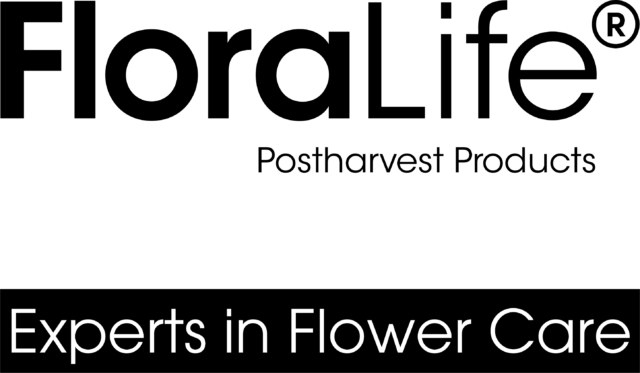Choosing the right product category
The wide array of post-harvest products available to the cut flower industry can be daunting: hydration solutions, flower foods, finishing sprays, pre-treatments, crop specific treatments, anti-botrytis treatments, anti-ethylene treatments, cleaning products…the list goes on.
You are probably asking, are all these products necessary? When you consider the sheer number of flower types that are grown and the number of channels in today’s floral industry: grower, wholesale, independent florist, event planner, bouquet manufacturer, supermarket floral, dot com, farmers markets, etc.; hopefully you can understand that these products exist to solve customer problems. So, let’s take a step back and try to simplify these decisions, starting with how to choose the right FloraLife® Flower Food product for your needs.
FloraLife® Product Classifications
When you go to the Floralife website you will see various product use categories: Clean & Disinfect, Hydration, Store and Transport, Treat, Feed, Finish, Dose, and Customer Care. The three we want to focus on here are ‘Hydration’, ‘Store and Transport’, and ‘Feed’, which include all the FloraLife® hydration and flower food products.
Hydration: This category covers hydration solutions that are primarily used in the farm/grower channel. One exception is FloraLife® Quick Dip which is often used by florists/designers to increase solution uptake.
Store and Transport: This category includes flower foods formulated to hold the flowers at a less mature developmental stage for several days. These products are used primarily in the wholesale, dot.com, and supermarket channels.
Feed: This category includes flower foods formulated to promote full opening and color development of the flower. These products are used primarily by retail florists, event planners, and the end consumer, including the flower food packets that are included with consumer bouquets.
Flower Food vs Hydration Solution
Both hydration solutions and flower foods hydrate flowers, but only flower foods provide energy (sugar) for the flower so it can develop to its full potential. Hydration solutions and flower foods contain similar technologies to hydrate the flower; the main difference is that flower foods contain sugar and hydration solutions do not.
Hydration solutions are commonly used in the grower channel to efficiently hydrate the newly harvested flowers (usually within 4 hours), so they can be processed, graded, and dry packed for shipping. The grower normally wants to limit flower development and opening, so providing energy (sugars) at this stage isn’t necessary. Maintaining the flowers at a tighter, less mature bud stage reduces shipping volume and the potential for physical damage.
Flower foods, as we mentioned earlier, have similar components as hydration solutions but also have sugar to provide energy for the flower. When a flower is growing in the field, the leaves are acting as “sugar factories”, converting light energy from the sun, water from the soil, and CO2 (Carbon dioxide) from the air into sugars via the process of photosynthesis. These sugars provide the necessary energy for the flower to open and develop normally. Once the flower is cut from the mother plant and processed, the leaves are no longer efficiently producing sugars. Eventually the cut flower will need a flower food to supplement the sugars it can no longer produce. This is especially important when the cold chain is disrupted. Remember that flowers require less energy when they are kept cold. FloraLife® flower foods fall under the use categories of ‘Store and Transport’ or ‘Feed’.
Which Flower Food Category is Right for You?
To decide which flower food category is right for you, ask yourself the following questions:
- Are my flowers going to be used immediately (less than 2 days) or will they be shipped/stored/displayed for a longer duration (3 to 7 days)?
- Are my flowers going to be kept in a cooler or room temperature prior to use?
The following table indicates which category to find the right flower food product for your needs based on the answer to questions 1 and 2:
| Determining the correct flower food category for your needs | Environmental Conditions - prior to use | ||
| Flower Cooler | Room Temp/Outside | ||
| Duration – days prior to use | Immediate use (less than 2 days)* | ’Feed’ | ’Feed’ |
| Shipped/Stored/Displayed (3 to 7 days)** |
’Store and Transport’ | ’Store and Transport’ or ‘Feed’ | |
*Flowers are to show satisfactory opening and color development for best display for the consumer or event
**Flowers are to remain at an earlier stage of development until needed for use
The Supermarket Channel Dilemma
You will notice that the bottom right quadrant in the chart indicates products from both categories could be used if flowers are to be displayed for 3 to 7 days at room temperature. These conditions are often encountered in the supermarket channel where room temperature displays are common. Supermarkets usually have sell-by-dates of 5-7 days for their bouquets, and many have consumer guarantees for the flowers to last 5 days. The dilemma lies in that it is desirable to have the flowers remain at an earlier stage of development until purchased by the consumer, however; remember that at room temperature the flower has higher energy demands. So, what should you do in this situation? Currently it is common for supermarkets to use a flower food ‘Store and Transport’ category; however, if you are having quality issues with certain flowers you may consider using a flower food in the ‘Feed’ category.
Next Steps
Once you’ve decided under which category to find the right flower food for your needs, you can now focus on the other attributes that differentiate flower food types: 1) Ultra vs Regular, 2) Clear vs Professional, 3) FloraLife® Express Technology, and 4) Special Flower Foods. We cover these topics in part II.
Have questions or need expert advice? Visit FloraLife.com or contact your local representative for an in-person consultation.
Product availability depends upon geographical region. Check here for more information.


